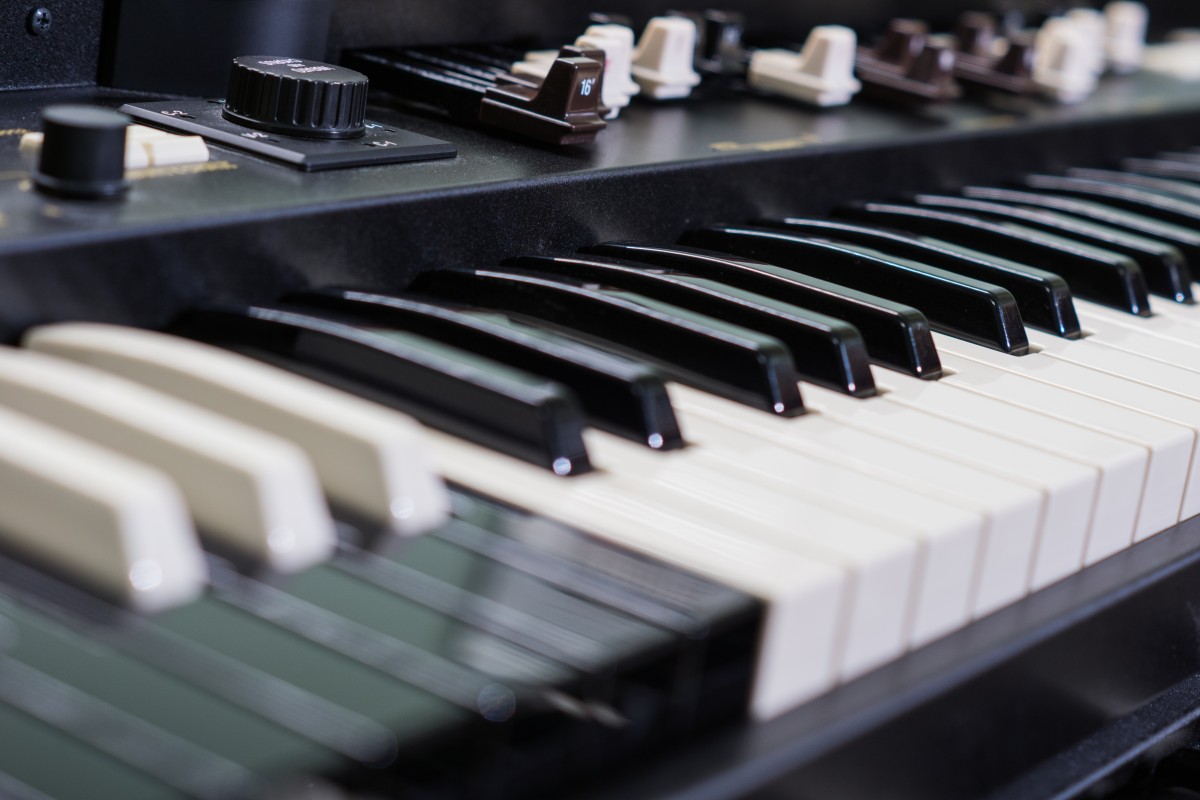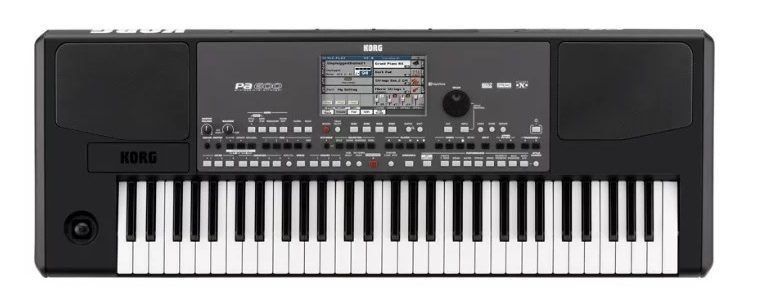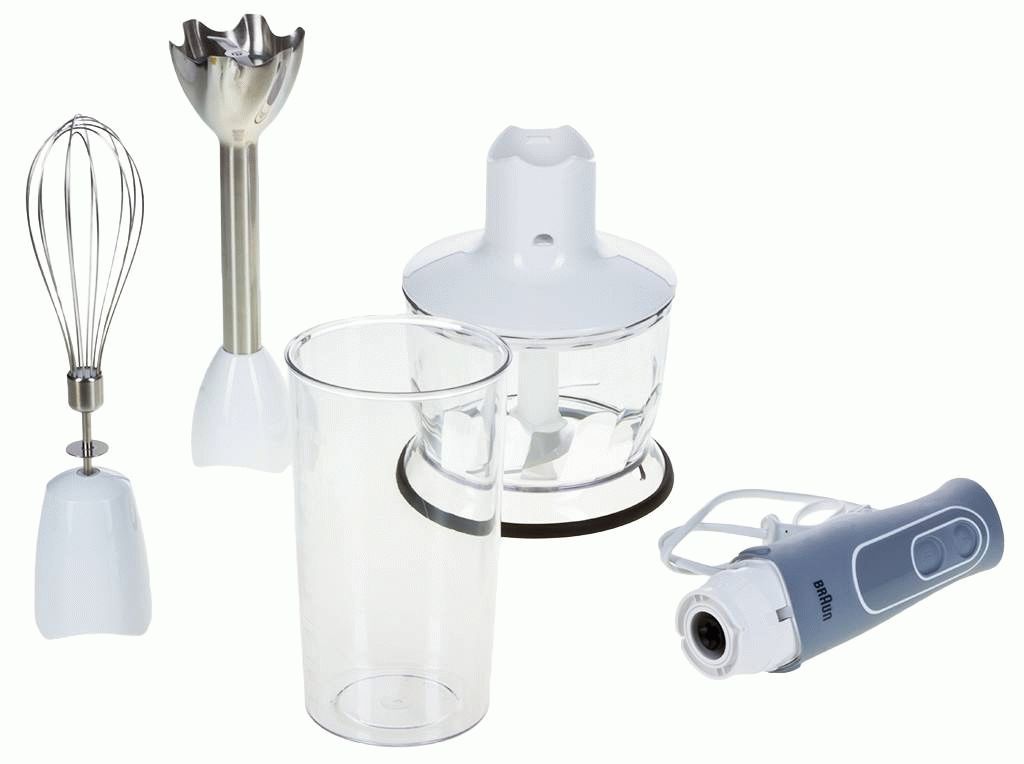Ranking of the best synthesizers for home in 2024

Having a musical instrument at home allows you not only to study, but also to arrange whole family concerts. The article describes in detail what criteria for choosing a device exist, which model of synthesizer is better to buy and how much a high-quality device costs in 2024.
Instrument specifications
The synthesizer is a compact keyboard instrument that can fit even in the smallest apartment. Often, for home use, such a device is purchased instead of a piano. The small size of the device makes it easy to transport the synthesizer from one place to another. This is a great advantage for musicians who use the instrument at various events. Synthesizers have a dedicated audio jack that allows you to connect a device to an amplifier.
A distinctive feature of this technique is a large set of reproducible sounds. The device is able to simulate playing guitar, drums and other musical instruments. This is the main difference between a synthesizer and an electronic piano. The device is capable of recording melodies, creating full-fledged music tracks with different parts.
The device works according to the following principle:
- when the keys are pressed, the contacts are closed;
- there is an electrical signal transmission;
- the received signal is processed on a microcircuit, sound waves are created.
To get different timbres, it is enough to change the voltage parameters. All devices are equipped with keyboards, tone controls, as well as a panel for changing voices, styles, speakers, various buttons for applying effects and other useful options. Most often, the devices have a display on which information about the set settings is displayed.
Among the wide range of modern synthesizers, each customer can choose a device for specific needs and skills. All popular models can be roughly divided into professional and amateur. The former are intended for experienced musicians who plan to use the instrument, for example, for public performances.
The second type of devices is suitable for beginners and differs significantly in price and size from professional synthesizers. Such models do not have many tones and are equipped with speakers with poor sound quality. However, the popularity of these models is due to the fact that they are well suited for training, since they are not overloaded with functionality that is difficult to understand for a beginner.

How to choose a synthesizer for home: basic criteria
To choose the right tool, you need to familiarize yourself with its characteristics in detail. This will facilitate the process of selecting a device and will not allow you to get lost in a huge range of equipment.
Automatic accompaniment
This option is required to overlay an arrangement and select a style. As you play, each hand plays a different instrument part (for example, the left hand plays the drums and the right hand plays the main piano part). Thus, a full-fledged melody is obtained, as in the performance of a whole group. In some cases, MIDI keyboards are purchased to play a single part and connect to a computer.
This function will be useful not only for amateurs, but also for those who perform in public places. Any melody will become richer with auto-accompaniment, because the device immediately turns into an arranger station, and the option also allows you to replace missing instruments during rehearsals. Among the existing models of synthesizers, there are instances with 200 built-in styles. However, for home use, 30 is enough.
Built-in backlight
This option allows you to play musical compositions without knowing the notes. There are several pieces in the device's memory, which can be learned by pressing the illuminated keys. This method of playing takes into account the speed of the melody, so the backlight turns on with precise delays.
This feature of the device is useful for children and people far from music. The main thing is to carefully monitor the blinking of the buttons and press them in time. A device with backlit keys is completely unnecessary for confident performers and piano learners, since this does not affect musical notation.
Number of keys
The number of octaves and the range of parts depends on this characteristic. Here it is necessary to build on the compositions that are planned to be played on the synthesizer. A couple of octaves is enough for some, while others cover more than 4-5.
If the device is purchased for children of primary school age, then you should focus on the models with 32 keys. This is enough for playing simple melodies. Such devices also allow you to arrange different sounds, but at the same time they are the most budget option on the market.
For learning to play classical music on the piano, 88-key synthesizers are best suited. Such a device is suitable for both music school students and adults. But for the performance of works in a team, you need to give preference to devices with 61 keys. They have a convenient size and are a versatile tool for playing in any musical genre.
Key types
Each synthesizer model can have one of the following keyboard types:
- Mechanical. The device plays sound at the same volume, regardless of how well you press the keys.
- Dynamic keyboard. In such devices, the volume depends on the strength of the key strike. This feature is useful for anyone who is serious about music.
- Sensory. Devices with this type of keys do not require pressing at all, a light touch is enough.
- Hammerhead. This type of keyboard has a lot of weight and is similar to a piano in terms of sound extraction parameters. Weighted key devices are ideal for music school students, as they are as close to a classic instrument as possible.
Devices can be with a full-sized keyboard or small-sized. The first type is the standard for classical pianos, and the second is most often chosen for children, since playing such an instrument does not require a lot of stretching of the fingers.
The presence of a sequencer
This additional feature allows you to record the played pieces into the device's memory and then play them back. The information is stored in the form of notes with all the features of the melody, and not in the format of a music file. The function allows you to create your own masterpieces, making the creative process more interesting.
Consider the number of pieces that can be stored on your device. The optimal indicator here is 3-5 compositions.
Number of tones
This parameter affects the range of sound of all provided synthesized sounds. Each timbre is responsible for a specific instrument, each of which can have a different sound. For example, in a composition, you can use not only the high frets of the guitar, but also the bass.
The richness of the sound depends on the number of timbres. For playing at home, a device with an indicator of 300 will be enough, but for professional use you need to pay attention to models with more than 500 timbres.
It is important to know that the device will not be able to play all the provided sounds at the same time. Here you need to look at the meaning of polyphony. This indicator can vary from 20 to 100 units. For home use, a device with a minimum value is sufficient.
Sampling function
With this option, the synthesizer is capable of simulating unusual sounds, such as voices, orchestra recordings, or birdsong. The recording is created using a microphone. All sounds are distributed to different keys, by clicking on which you can reproduce the desired sound. The device with the ability to record a set of samples is suitable not only for home entertainment, but also for creating unique compositions.
Number of effects
Effects help you modify existing sounds. With their help, the sound wave can be stretched, and chords can be duplicated, thus creating a completely new sound of familiar instruments. A home synthesizer can have up to 5 effects, but in professional devices this figure reaches 50.
Rating of quality devices from the best manufacturers
After studying the features of the tool, you can proceed to the selection of a specific model. The list of the best synthesizers for the home in 2024 includes both inexpensive devices for beginners and more advanced devices with a wide range of capabilities. Which company is better to purchase a synthesizer and what features each model has in detail is described in detail below.
10th place. SUPRA SKB-611
This synthesizer has 61 unweighted keys, the keyboard is full-size. The device has a compact body with a built-in speaker system. For the convenience of the user, there is a display on the panel. The polyphony of the device is 16 voices, the number of timbres is 100. There are 2 effects and 100 accompaniment styles. The weight of the tool is 5.4 kg.

- there is a learning function;
- there is a pitch control;
- the presence of a metronome;
- built-in song recording function;
- there is auto accompaniment;
- low price.
- no USB interface.
The average price is 6 420 rubles.
9th place. YAMAHA MOTIF XF6
The model is equipped with a full-size 61-key keyboard. All device settings are shown on the display. The device supports 1353 tones, and its polyphony is 128 sounds. You can apply up to 93 effects. The device has connectors for headphones and a microphone. The synthesizer weighs 15.1 kg.

- the keyboard is sensitive to touch;
- there are plug-in pedals;
- there is a pitch controller;
- there is an automatic accompaniment;
- there is a metronome;
- there is the ability to record compositions;
- there is a MIDI input;
- USB type A, type B and Ethernet interfaces are supported.
- high price;
- no training mode;
- no built-in acoustics;
- great weight.
The average price is 164,360 rubles.
8th place. YAMAHA PSR-S650
This synthesizer has 61 full-size keys in a compact package. It is possible to work with 865 tones, and 64 sounds in polyphony. There are 181 auto accompaniment styles and 321 effects. The device allows you to record up to 5 songs with 16 audio tracks each. There is 1 headphone output. The tool has an acceptable weight of 7.3 kg.

- sensitive keys;
- plug-in pedals;
- adjustable pitch;
- there is a built-in speaker system;
- you can record melodies;
- there is auto accompaniment;
- there is a USB port with the ability to connect an external drive.
- no training program;
- lack of multi-pads and equalizer.
The average price is 44,900 rubles.
7th place. Teenage Engineering OP-1
The device is equipped with 24 unweighted small keys. The model is presented in a compact housing with a display. This synthesizer allows you to record songs, each of which can contain up to 4 tracks. Additional functions include an FM radio and a G-Force motion sensor that allows you to control the effects.

- has its own acoustics;
- there is a built-in microphone;
- you can record your own compositions;
- USB input is provided;
- durable metal body;
- stylish design;
- runs on battery.
- high price;
- no training;
- there are no pedals;
- there is no instruction in Russian.
The average price is 71,490 rubles.
6th place. CASIO WK-7500
Model with a full-sized unweighted keyboard. Number of keys - 76. The device is capable of working with 800 voices and 250 styles of accompaniment. Up to 115 effects can be applied to the sound. The built-in memory can record up to 5 songs, consisting of 17 tracks. SDHC support is provided for memory expansion. The synthesizer has 1 headphone output and a microphone input. Tool weight - 8.9 kg.

- there is a sensitivity of the keys to touch;
- plug-in pedals;
- there is a controller for changing the pitch;
- the acoustic system is built into the device;
- there is auto accompaniment;
- there is a metronome;
- supports SD memory cards;
- USB type B interface;
- recording of the plays being played is provided;
- runs on battery.
- lack of training.
The average price is 34,490 rubles.
5th place. CASIO WK-7600
The device is equipped with 76 full-size keys. The body of the instrument is compact, the total weight of the synthesizer is 8.3 kg. The settings are shown on the built-in display. The unit allows you to work with 820 voices, 260 styles of auto accompaniment and 115 effects. The instrument has a polyphony of 64 sounds. It is possible to record up to 5 melodies, consisting of 17 audio tracks. There is 1 headphone out and 1 microphone in.

- keyboard with touch sensitivity;
- adjustable pitch;
- built-in speaker system;
- supports SD cards;
- USB type B support;
- there is a metronome;
- there is an automatic accompaniment;
- battery powered.
- there is no training.
The average price is 34,490 rubles.
4th place. KORG Pa600
Compact synthesizer with plug-in damper and control pedals. The keys are full-sized, 61 pieces. Features include 950 tones, 125 effects, and the ability to record 16-track songs. The polyphony is 128 sounds. There is 1 line out.

- auto accompaniment function;
- the presence of a metronome;
- the ability to record songs;
- touchscreen;
- there are MIDI connectors;
- support for USB interfaces;
- built-in acoustics;
- the keyboard is touch sensitive.
- high price;
- there is no learning function.
The average price is 60,000 rubles.
3rd place. Medeli M17
This synthesizer has 61 full-size keyboard keys housed in a compact body. All settings are displayed. The instrument offers 390 voices, 64 polyphonic voices and 100 accompaniment styles. For learning, 110 melodies are stored in the device's memory. The device weighs 4.5 kg.

- there is a learning function;
- touch sensitive keys;
- plug-in pedals;
- the ability to change the pitch;
- built-in speaker system;
- the presence of auto accompaniment;
- easy;
- low price.
- only 1 song can be recorded;
- there is no instruction in Russian.
The average price is 10 260 rubles.
2nd place. CASIO WK-6600
Synthesizer with 76 full-size keys with display and built-in acoustics. The device supports 700 different voices, 48 voice polyphony and 210 auto accompaniment styles. It is possible to record 5 full songs, consisting of 17 audio tracks. There is 1 output for headphones and a microphone jack. The weight of the tool is 7.2 kg.

- pedals can be connected;
- there is a possibility of adjusting the tone;
- memory cards are supported;
- there is an automatic accompaniment;
- there is a metronome;
- USB interface;
- battery operation.
- there is no training program.
The average price is 28,990 rubles.
1 place. CASIO CTK-7200
This model is equipped with 61 full-size keys. There is a built-in speaker system and the keyboard is touch sensitive. Supports 64 voice polyphony, 820 different tones, 260 styles and 115 effects. The user has the ability to record 5 of his songs in the device's memory. You can connect a microphone and headphones. Weight - 6.7 kg.

- battery device;
- there is auto accompaniment;
- there is a metronome;
- SD cards are supported;
- Ability to work with USB type B.
- there is no learning function.
The average price is 28,990 rubles.
The cost of tools is in wide ranges. The choice, like the price, depends on how closely and professionally a person plans to make music, and what requirements are placed on a synthesizer.
new entries
Categories
Useful
Popular articles
-

Top rating of the best and inexpensive scooters up to 50 cubic meters in 2024
Views: 97661 -

Rating of the best materials for noise insulation for an apartment in 2024
Views: 95022 -

Rating of cheap analogues of expensive drugs for flu and colds for 2024
Views: 91751 -

The best men's running shoes in 2024
Views: 87681 -

Top ranking of the best smartwatches 2024 - price-quality
Views: 85091 -

Best Complex Vitamins in 2024
Views: 84801 -

The best dye for gray hair - 2024 top ranking
Views: 82406 -

Rating of the best wood paints for interior use in 2024
Views: 77202 -

Ranking of the best action cameras from China in 2024
Views: 75269 -

Rating of the best spinning reels in 2024
Views: 74827 -

The most effective calcium supplements for adults and children in 2024
Views: 72463 -

Top rating of the best means for male potency in 2024 with a description
Views: 68296









